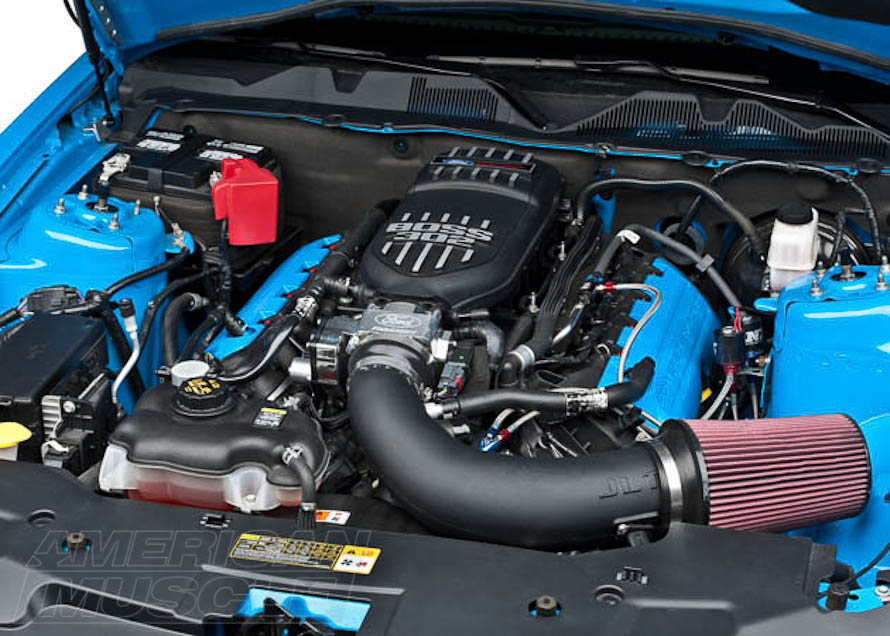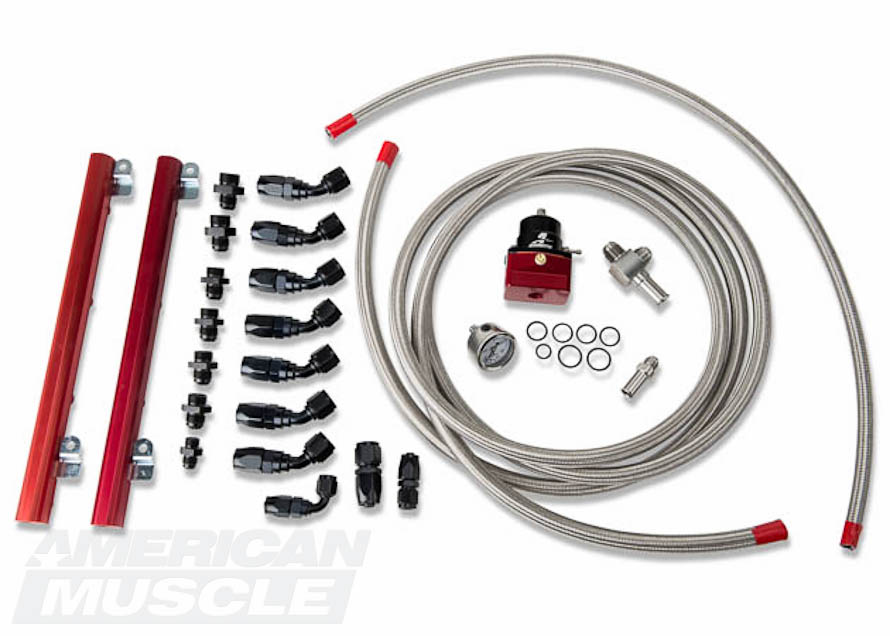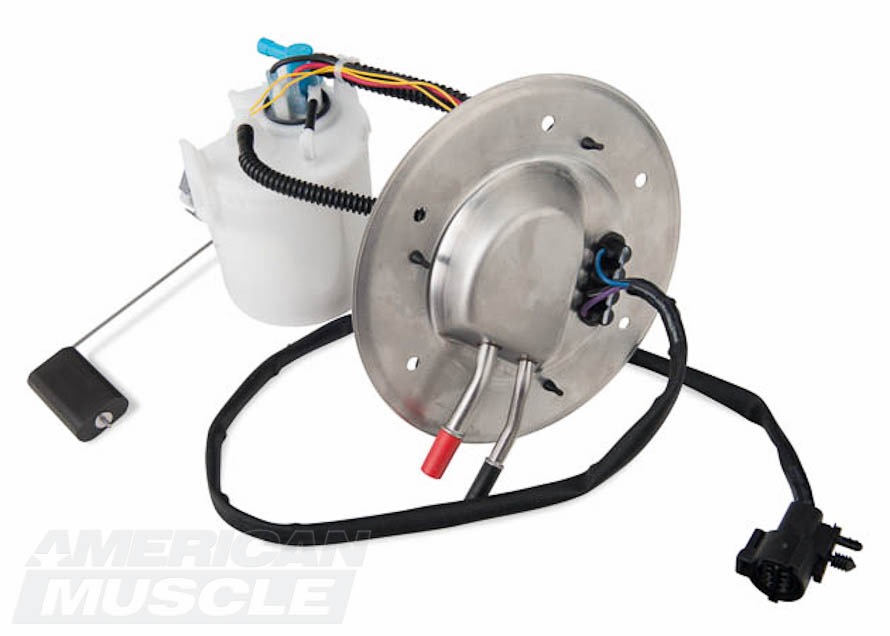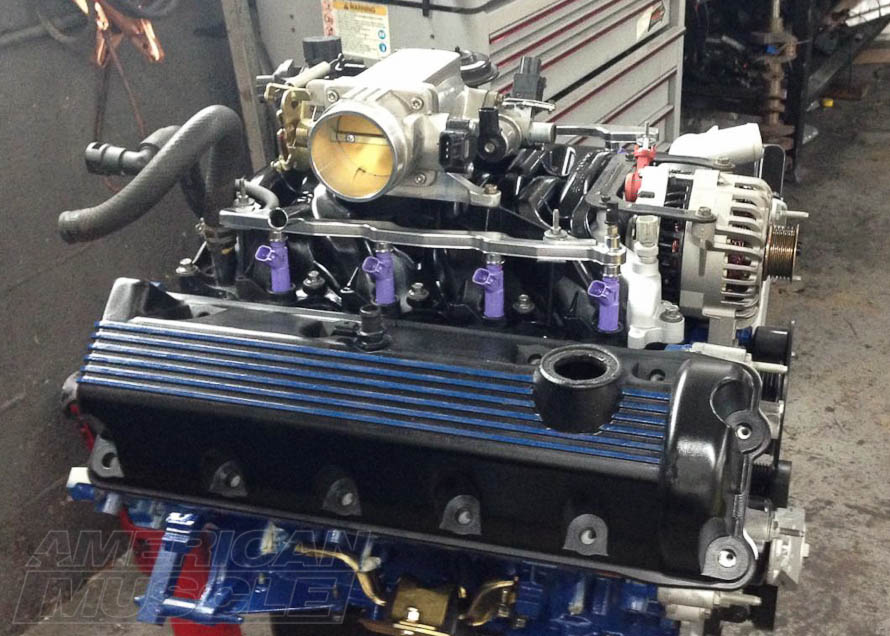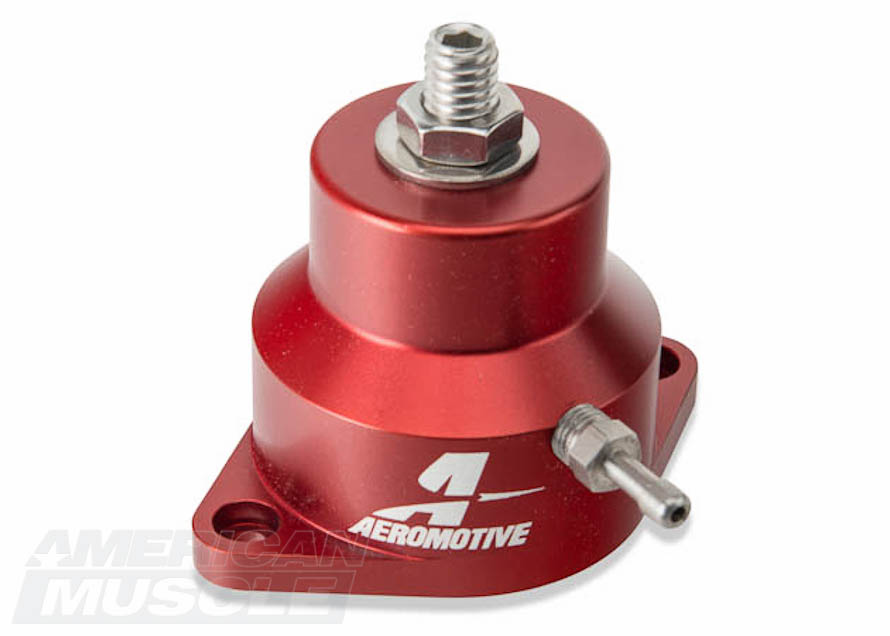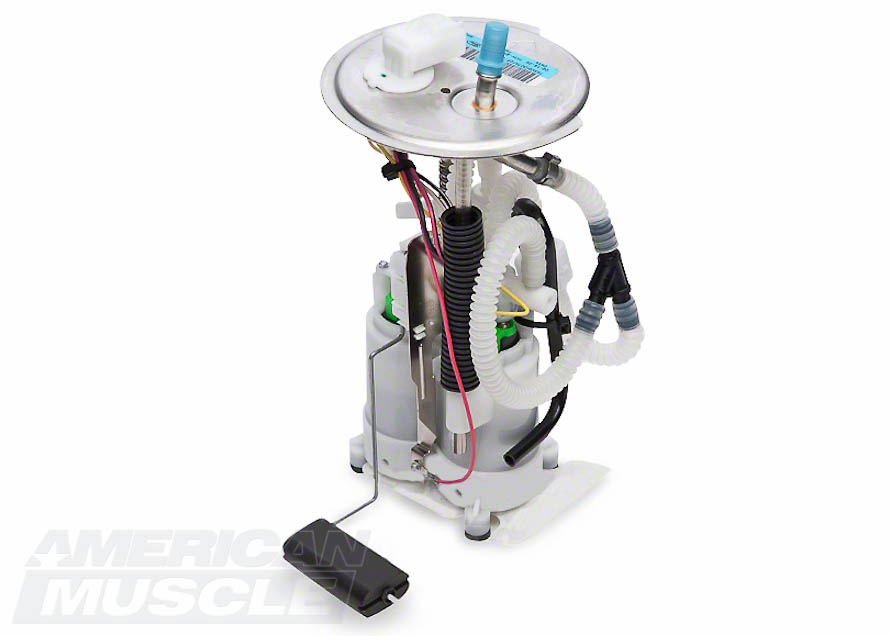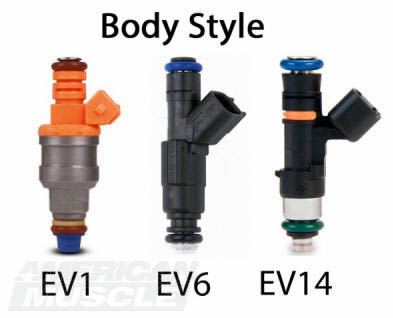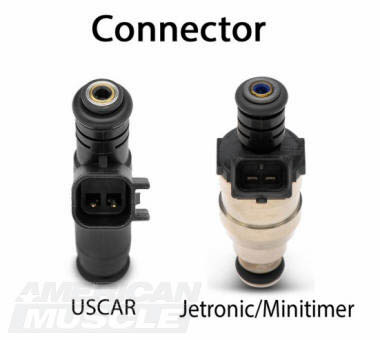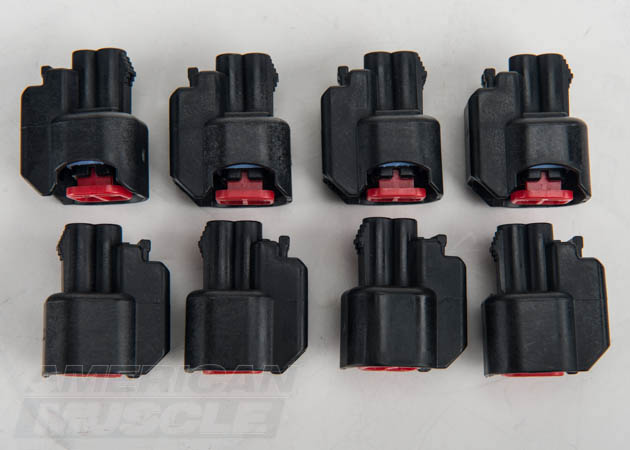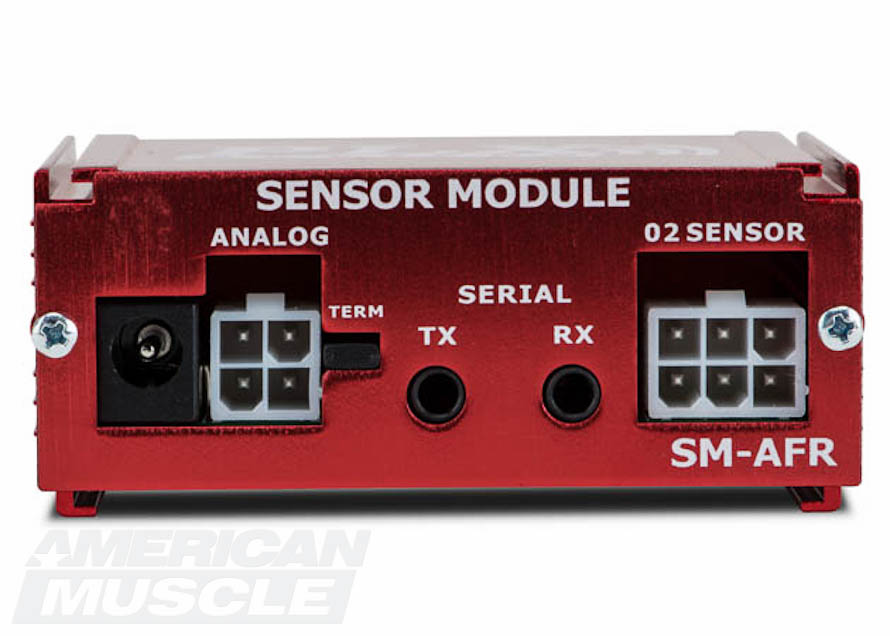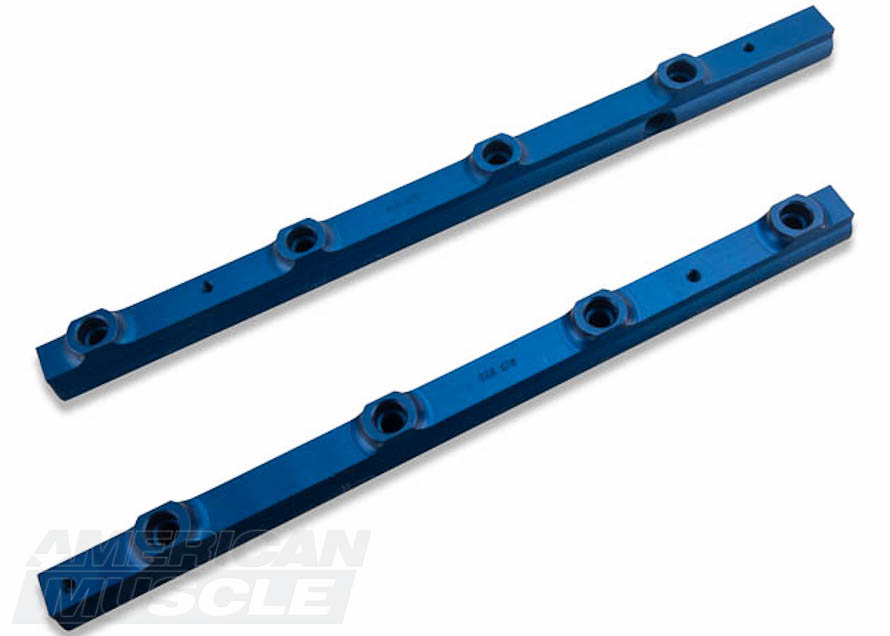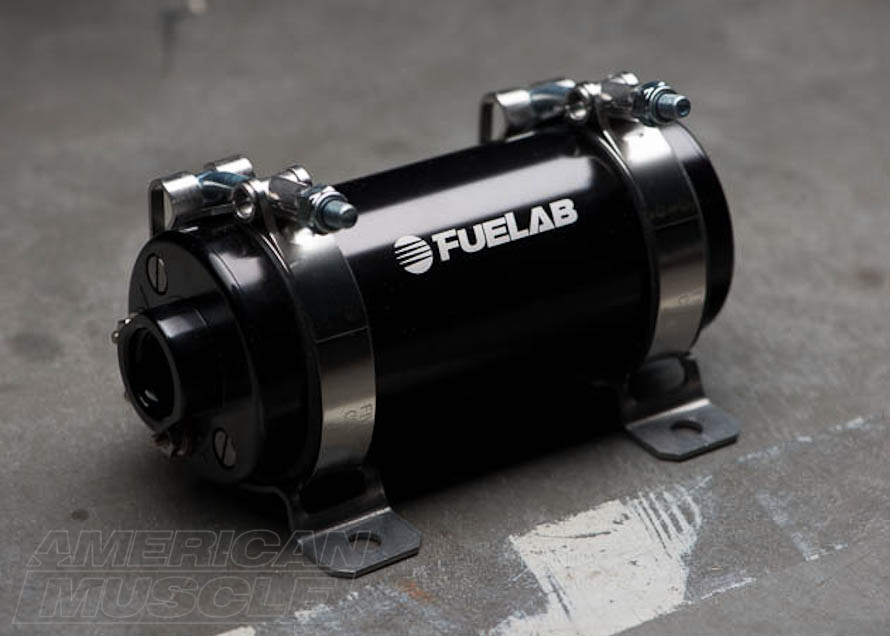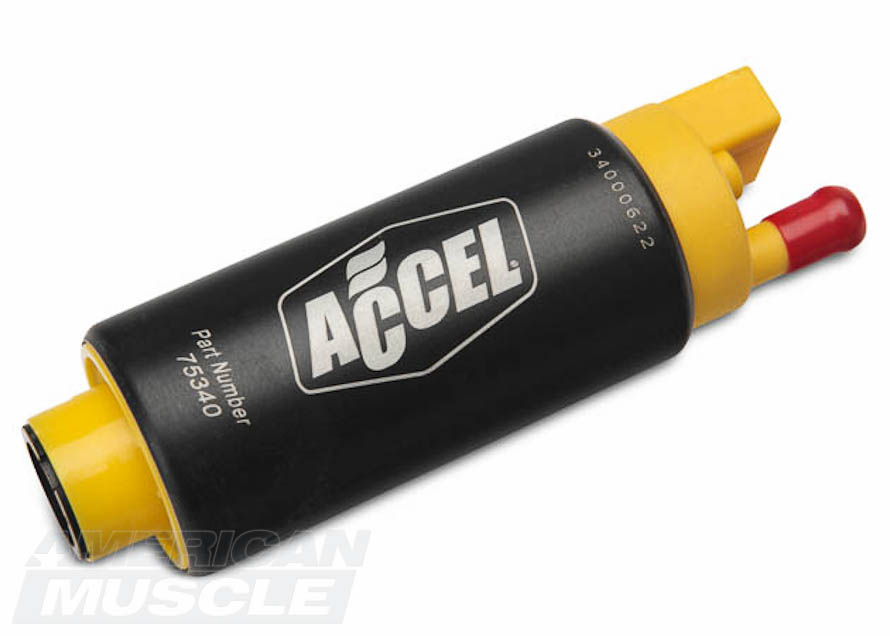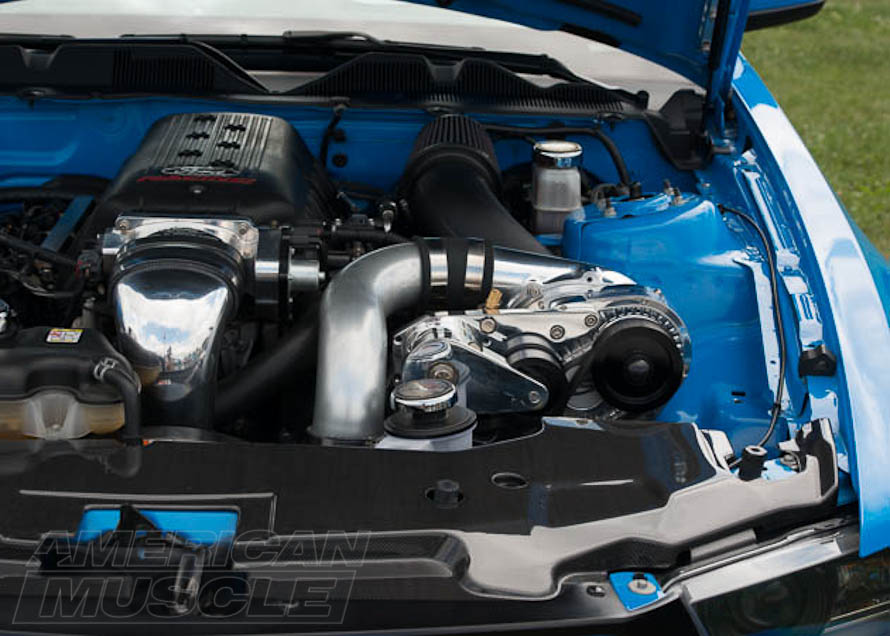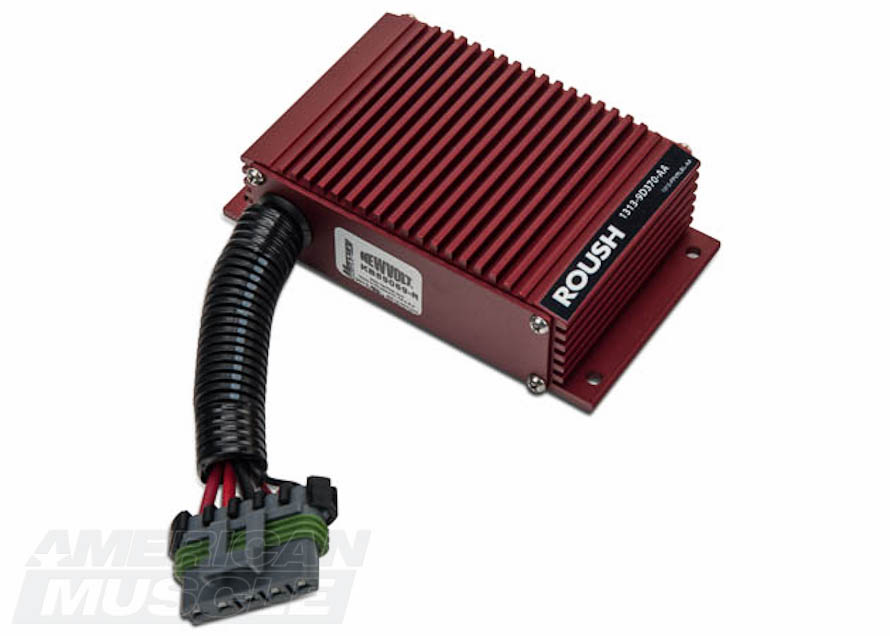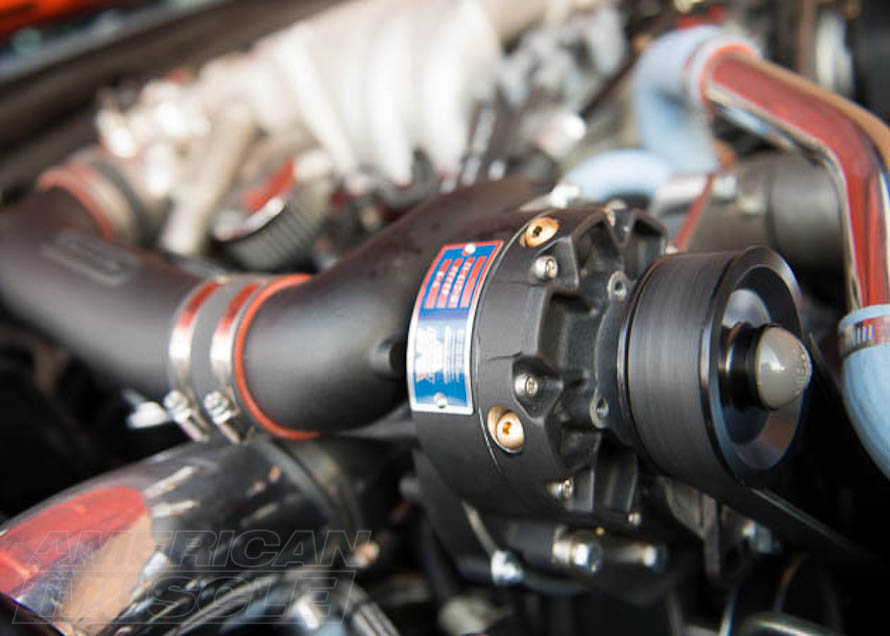A fuel injector’s flow rates are measured in “pounds per hour” and are available in different sizes depending on the application. AmericanMuscle carries fuel injectors ranging from 19 lb/hr up to 120 lb/hr, but you never want to upgrade your Mustang’s fuel injectors to a larger size unless it is absolutely necessary. Too large a fuel injector will cause your engine to run rich, which will actually cause you to lose power. Bigger is not always better.
The formula for calculating the correct size fuel injector for your Mustang is calculated by: Injector Flow Rate (lb/hr) = (Engine HP) x (BSFC) / (Number of Injectors) x (Injector Duty Cycle)
Engine Horsepower (a.k.a. brake horsepower) is measured at the flywheel, NOT at the rear wheels. BSFC (Brake Specific Fuel Consumption) represents how much fuel (in-lb) required per hour per each brake horsepower the engine produces. BSFC is usually a number between 0.4 and 0.7 for gasoline engines. BSFC can be estimated but for best results, the actual number measured on a Dyno should be used.
- For naturally aspirated engines, estimate the BSFC to be 0.4 to 0.5
- For nitrous engines, estimate the BSFC to be 0.5 to 0.6
- For forced induction, estimate the BSFC to be 0.6 to 0.7
Injector Duty Cycle refers to how long the injector needs to be open (flowing fuel) in order to supply the required amount of fuel. If the injector has a 100% duty cycle, it means it is open all the time injecting fuel whether the valves are open or closed. This will cause unburned fuel to be blown past the exhaust valve or to be poorly atomized, which results in poor combustion, loss of fuel economy and power. Because of this, it’s generally recommended to select an injector with a high flow rate that does not exceed an 85% (0.85) duty cycle.
Example: A 300HP naturally aspirated V8 Mustang requires what size fuel injector? Injector Flow Rate = 300 (HP) x 0.5 (BSFC) / 8 (Number of injectors) x 0.85 (duty cycle). The Injector Flow Rate would equal 22.05 lb/hr or 24 lb/hr, rounding up to the next popular injector size available.
If you are trying to compare injector flow rates and you have flow data at one delta pressure, you can easily calculate the flow rate at a different delta pressure as follows:
Flow rate at new delta pressure = (flow rate at old pressure) x v(new pressure/old pressure)
Engines require a certain fuel flow rate that is generally measured in lb/hr (pounds per hour) and can be calculated via knowledge of its Brake Specific Fuel Consumption (BSFC). BSFC represents how much fuel (in lb) is required per hour per each brake horsepower the engine produces. More clearly stated, this means if you have a gasoline engine that makes 300 brake horsepower, its total maximum fuel requirement in lb/hr can be calculated as follows:
Fuel flow requirement = (brake horsepower) x (BSFC)
This calculation can also be reversed to give the maximum safe hp a set of injectors can support, which gives:
Max safe hp = [ (injector size) x (total # of injectors) x (max duty cycle) ]/BSFC
Example: The following guide is a general rule of thumb for sizing fuel injectors on an 8-cylinder engine using a BSFC of 0.50. Forced-induction engines typically range from a BSFC of 0.55 to 0.65, with the latter value arising from the fuel enrichment necessary to keep exhaust temperatures below 1650 deg F and catalyst temperatures below 1750 deg F.
Naturally Aspirated: (19 lb x 8 x .85)/.50 = 258.4 or approx 258 hp @ 85% duty cycle Forced-Induction @ 0.55: (19 lb x 8 x .85)/.55 = 234.9 or approx 235 hp @ 85% duty cycle Forced-Induction @ 0.65: (19 lb x 8 x .85)/.65 = 198.8 or approx 199 hp @ 85% duty cycle
The below calculations assume a fuel pressure of 39.15 psi. If you can raise fuel pressure and still be sure your fuel pump can supply the desired flow rate, then these maximum horsepower numbers will increase.

